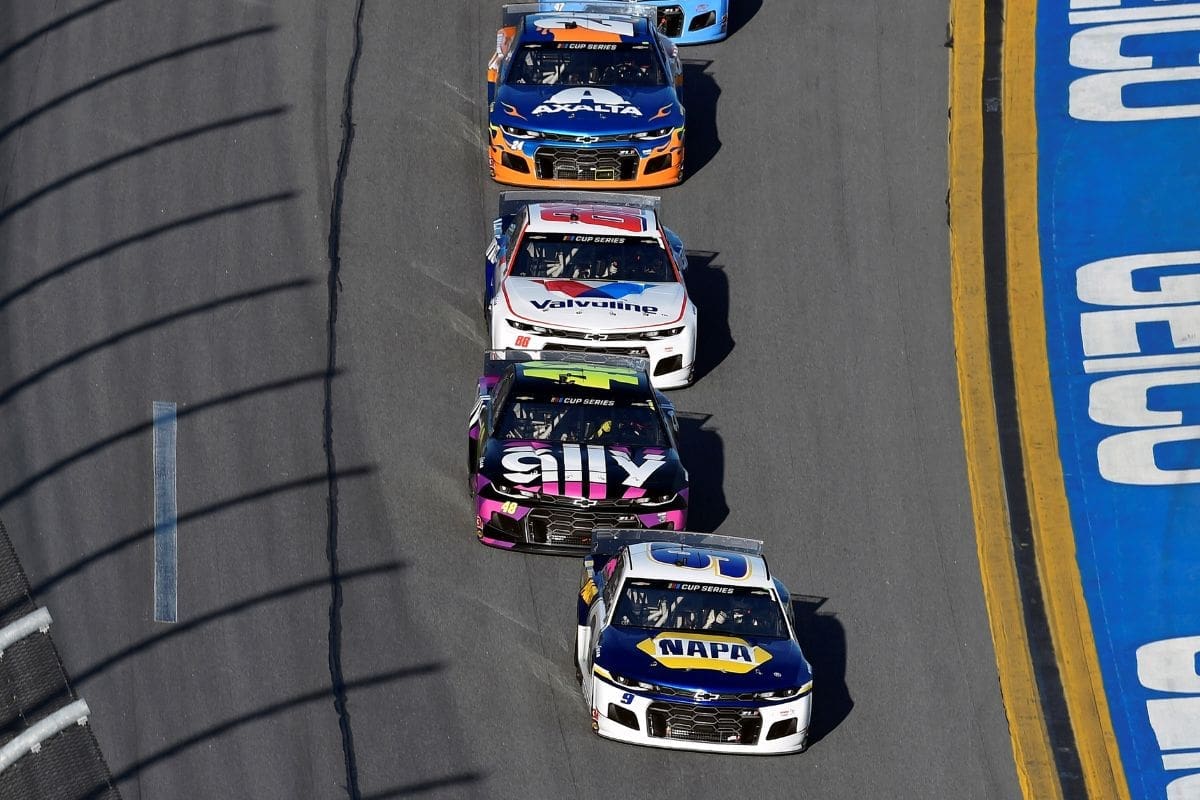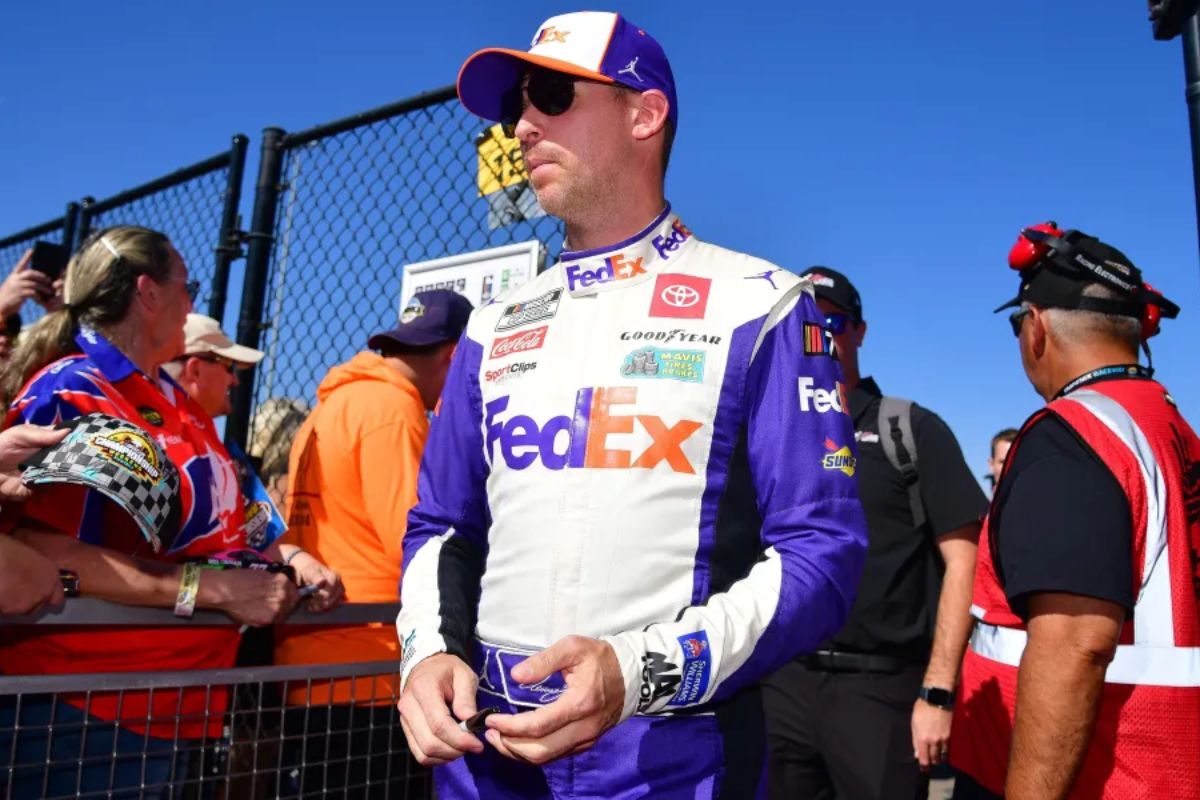Chase Elliott Calls Watkins Glen’s Racing Unreliable: Chase Elliott‘s assertion that racing at Watkins Glen is unreliable raises crucial questions about the inherent challenges faced by drivers on this iconic road course. His remarks highlight the notable impact of track surface degradation and unpredictable weather on race outcomes, which can shift dramatically from lap to lap. As a seasoned competitor with multiple victories at this venue, Elliott’s emphasis on instinctual driving over simulation suggests a deeper concern about the consistency of performance. This perspective invites an exploration of how varying conditions affect individual racers and the broader dynamics of NASCAR as a whole.
Key Highlights
- Chase Elliott highlights track surface degradation as a major factor affecting grip levels during races at Watkins Glen.
- Weather variability complicates tire management, impacting race strategies and outcomes unpredictably.
- High-speed turns present risks for accidents and mechanical failures, contributing to unreliable racing experiences.
- Limited practice sessions restrict drivers’ ability to adjust to changing track conditions effectively.
- Historical data shows fluctuating performances, reinforcing concerns about the consistency of racing at Watkins Glen.
Hendrick Motorsports’ Dominance at Watkins Glen
Hendrick Motorsports has established itself as the dominant force at Watkins Glen International, a trend highlighted by their unmatched success over the past six years. Since Chase Elliott’s inaugural victory in 2018, the team has secured a remarkable string of five consecutive wins at this iconic 2.45-mile road course. This unmatched achievement emphasizes the organization’s meticulous approach to race strategy, vehicle preparation, and driver development, culminating in a powerful presence at the Glen.
With a total of 11 victories at Watkins Glen, Hendrick Motorsports not only leads the field but also exhibits their long-standing expertise in maneuvering its unique challenges. Jeff Gordon, the team’s vice chairman, exemplifies this legacy with four wins at the venue, placing him among the all-time greats.
The team’s ability to consistently adapt to the specific demands of road racing is a reflection of their engineering skill and commitment to excellence.
As the NASCAR playoffs approach, the strain mounts on rival teams to break Hendrick’s six-year stranglehold on Victory Lane. This challenge is compounded by the unpredictable nature of road-course racing, where strategy and execution can dramatically impact outcomes.
The focus on performance combined with a track record of success, positions Hendrick Motorsports as the benchmark in the Finger Lakes region. Understanding the intricacies of their dominance at Watkins Glen provides valuable insights into what it takes to achieve sustained excellence in the highly competitive world of motorsports.
Chase Elliott’s Approach and Road Course Success
Chase Elliott’s success at Watkins Glen is a demonstration of his mastery of road course racing, further solidifying his reputation as a top contender in the NASCAR Cup Series. With a record seven road course victories among active drivers, Elliott has established himself as the sport’s preeminent road course specialist. His recent performances, including consecutive wins at Watkins Glen, illustrate his ability to adapt and excel under stress, a vital skill in the unpredictable landscape of NASCAR.
Elliott’s approach to racing is characterized by a unique blend of confidence and common sense. His work for road courses indicates a belief in his instinctual driving abilities and track knowledge. This mindset is particularly essential as he gears up for the playoffs, where every decision and performance can greatly impact his championship aspirations.
View this post on Instagram
His readiness for recovery at Watkins Glen this season, especially after last year’s misfortune of running out of gas, further highlights his resolve to refine his strategy and execution. As he prepares for the upcoming race, Elliott’s focus on minimizing overpreparation while leveraging his experience positions him as a formidable contender.
His mastery of road course dynamics, combined with a calm demeanor under stress, provides him with a competitive edge. Ultimately, Elliott’s approach and past successes not only resonate with fans but also create an expectation of excellence as he continues to navigate the complexities of NASCAR’s road courses.
Hendrick Motorsports’ Road Course Dominance
A remarkable trend has emerged in NASCAR’s road course landscape, showcasing the impressive dominance of Hendrick Motorsports. This year, the organization has achieved an extraordinary feat by securing victories in all three road course races. Significantly, William Byron succeeded at Circuit of the Americas (COTA), Kyle Larson at Sonoma, and Alex Bowman at the Chicago Street Race. This unprecedented success marks the initial instance of a single organization winning three road course events in a single season, highlighting their competitive edge and tactical skill.
As Hendrick Motorsports continues to assert its dominance, the question looms: Can Chase Elliott extend this streak to four consecutive road course wins at Watkins Glen? The answer will unfold over the scheduled 90 laps, where strategy, skill, and the team’s historical performance will certainly play a crucial role. This ongoing success not only solidifies Hendrick’s reputation but also sets a high bar for competitors aiming to dethrone them in future road course events.
Denny Hamlin’s Preparation for Watkins Glen
As Hendrick Motorsports solidifies its road course dominance, other competitors like Denny Hamlin are preparing for the challenge ahead at Watkins Glen. With the introduction of a new tire compound from Goodyear, which could result in a notable ‘three-second falloff per lap,’ Hamlin’s strategy is essential to his performance. He emphasizes the importance of thorough preparation, particularly in the context of adapting to changing conditions on the track.
Hamlin’s preparation consists of several key components:
- Sim Work: Utilizing simulation technology to understand the new tire dynamics and simulate race scenarios.
- Extra Practice: Taking advantage of supplementary practice time on Saturday to gather data and refine strategies.
- Team Debriefing: Collaborating with his crew to analyze performance and make necessary adjustments.
- Adaptability: Focusing on the team’s strength in adjusting to varying circumstances throughout the race.
Hamlin expressed confidence in his team’s capabilities, noting that Watkins Glen has historically been one of their strongest road courses.
I think it’s going to be a challenge. I feel like our team is very strong when it comes to adapting to circumstances like this. I enjoy Watkins Glen. It has typically been our strongest road course over the years, so I am confident about this weekend.”-(hamlin)
His approach highlights the dual importance of theoretical preparation and practical execution. By combining simulation work with on-track practice and team collaboration, Hamlin aims to navigate the complexities posed by the new tire compound effectively.
“We’ll definitely spend a lot of time in the sim doing our prep work like normal. It’s also good that we get extra practice time on Saturday to be able to get some laps, then debrief with the team, and then go out and run again.”-(hamlin)
As the weekend unfolds, his ability to adapt and implement learned strategies will be vital in his pursuit of victory and a coveted position in the Round of 12.
Hamlin’s Track Record and Playoff Implications
Denny Hamlin’s track record at Watkins Glen presents a mixed bag of results, reflecting both the challenges he faces and the implications for his playoff aspirations. In 17 starts at this particular road course, Hamlin has secured only one victory, achieved in 2016, demonstrating the difficulty of consistently competing at a high level on this unique track. His average finishing position of 15.0 further highlights his struggle to navigate the complexities of the course, which often presents unpredictable racing conditions.
With a disappointing outcome at Atlanta fresh in his mind, Hamlin’s focus shifts to maximizing his performance at Watkins Glen. As the NASCAR Cup Series approaches its critical playoff stage, his ability to secure a strong finish is vital. The next two races are essential not only for Hamlin but also for fellow competitors like Chase Elliott, as they both seek to solidify their positions for the Round of 12.
Hamlin’s historical challenges at Watkins Glen, coupled with the current stakes, create a tense environment for the #11 driver. As he aims for his 235th career win, the need for tactical execution and adaptability will be paramount.
It remains to be seen if Hamlin can overcome his past hurdles and emerge victorious, potentially altering the course of his playoff experience.
News in Brief: Chase Elliott Calls Watkins Glen’s Racing Unreliable
Chase Elliott’s representation of racing at Watkins Glen as unreliable emphasizes the complexities inherent in road course competition. Factors such as track surface degradation and unpredictable weather create considerable variability in race outcomes. This unpredictability not only challenges drivers’ instincts and adaptability but also influences comprehensive team performance. As illustrated by Hendrick Motorsports‘ successes, mastery of these elements remains essential for competitive advantage, while the experiences of drivers like Denny Hamlin highlight the vital nature of preparation and strategy in handling through these challenges.
ALSO READ: Chase Elliott’s Fans Demand Link Up with NFL Great – Can He Deliver?



